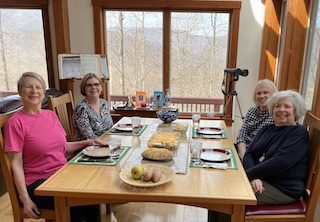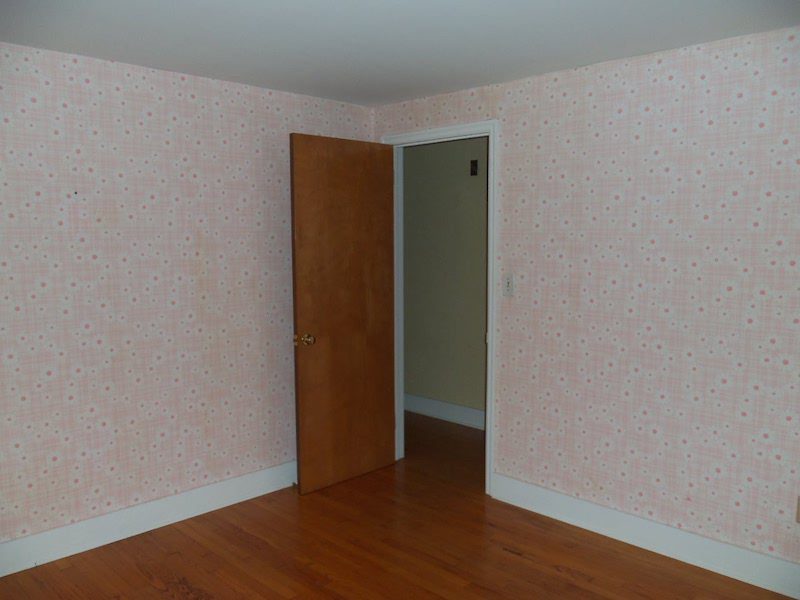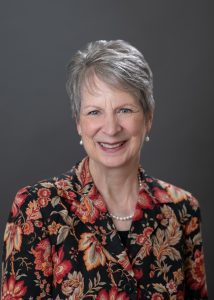
Last week, the 1951-ers met at Vanaprastha for lunch—our third gathering. I wrote about the second here and here. Below is a story from our first meeting last summer. Enjoy!
***
“Where were you when you heard JFK was shot?” All of us were in seventh grade; two in math class, two in school assemblies.
“John, Paul, George, or Ringo?” One non-committal, one George, two were going to marry Paul—I was one of them.
Four of us 1951-ers had met for lunch to celebrate our 70th birthdays. We didn’t know much about one another’s past, not having grown up together, but had discovered our same-age connection during our church-sponsored women’s retreat. Seated on the restaurant patio, eating salad and sandwich wraps, we shared answers to questions about the Sixties one of the women had compiled as conversation starters.
“Did you watch the moon landing?” When it was my turn, I said, “This might sound strange, but my father and I were wallpapering my room that day.”

Between hanging strips of pink-and-white flowered paper, we’d watched the grainy telecast of the lunar landing on a black-and-white TV set next to the staging area in the sitting room. Five years before, my parents had purchased the three-bedroom, one-bathroom ranch they’d been renting and three years later added a wing of bedrooms onto the back of the house. My younger sister and I had our own rooms, and my parents had a master bedroom suite. Their old bedroom became a study and guest room, where my older sister slept when she was home because the girls’ old bedroom was now an extension of the kitchen.
“I wonder how your older sister felt about not having a room,” said the woman who’d organized our shared birth-year lunch celebration.
“She certainly didn’t benefit from the addition,” I said. “My younger sister did, and I did, too, for a couple of years. But I missed my sisters and our old bedroom.”
I felt the cool metal of the patio chair against my body. The story had shifted. But the play-back in my head continued, as did the telling.
Originally, I’d chosen to paint my bedroom spring green. Why my father and I decided to redecorate my bedroom on that rainy day just before I went to college, I don’t remember. Maybe it had something to do with our tender-hearted, New England father having a hard time letting us go. My mother seemed okay, going back to work and school, resuming her teaching career. But as we three girls left home and married, our father crippled himself with bursitis while building sections of stone wall at the edge of our property as monuments to us. My older sister’s wall, my wall, and finally my younger sister’s stone bridge.
I looked up at the women around the table. “What I do remember about the moon walk is how strange it seemed to be dipping the pink-and-white flowered paper into the wheat paste and smoothing the strips onto the walls of my bedroom while Neil Armstrong spoke his famous words: ‘One small step for man…’”
It was a strange time, we all admitted. The Sixties, our teens, going to college.
After another pause, I chose the next question from the list. “Remember Seventeen Magazine? The ‘in’ colors and fashion ‘dos’ and ‘don’ts.’” We laughed.
On the drive home, I thought about my moon-landing story. Why were we redecorating my bedroom just before I turned eighteen and left for college? Something about that story didn’t ring true. I changed my view to an external camera, looked back at myself, and realized I must have asked for the girlish wallpaper as a birthday present. So, the story was not so much about my father marking our passage in stone but about a girl sealing her bedroom walls with paper as a monument to her childhood, fearing that giant leap and the loss of home.
After five decades, the outside transformations from the summer of 1969 became an inside transformation about knowing myself—probably how the women had seen me and maybe themselves, too. Our stories have ways of outing us. But they’re not so much about us as they are about life: growing up, leaving home, letting go, seeing events in our lives from a different perspective.
When we tell our stories, we view those experiences through the inside-out camera eyes of memory. Moving the camera angle to the outside can reveal the larger, truer meaning. Like Armstrong’s moon walk and the view he had of Earth in the distance, the camera recording him showed the leap and brought the story home.



Carole, this is a beautiful post. I enjoyed reading of your reunion, memories, special moments, and reflection on life. What a time it must have been to live then. Your words are wise!
Thank you for reading my post, Karla, and for your kind words. God bless you. -C.D.
You’re so welcome. I’m sorry I haven’t been a regular reader! God bless you, too. ♥️🤗